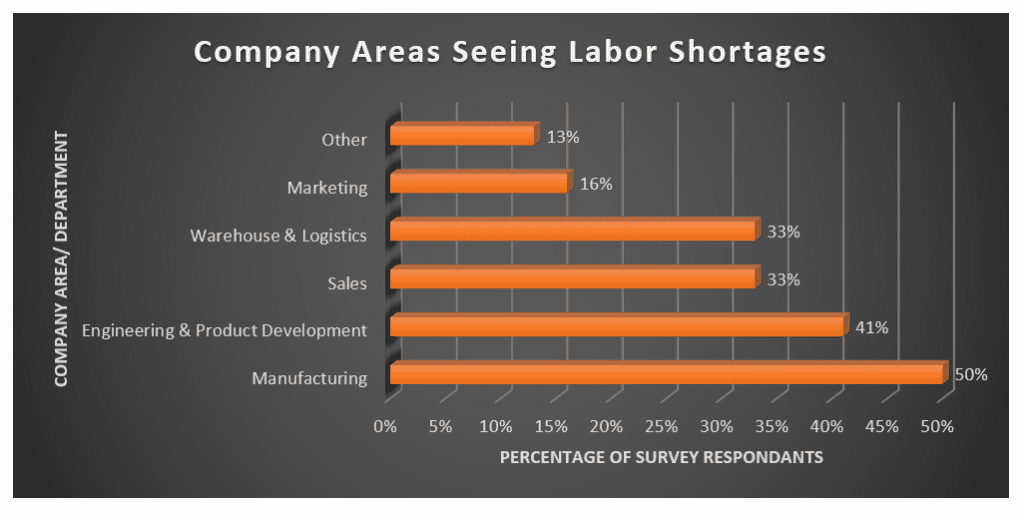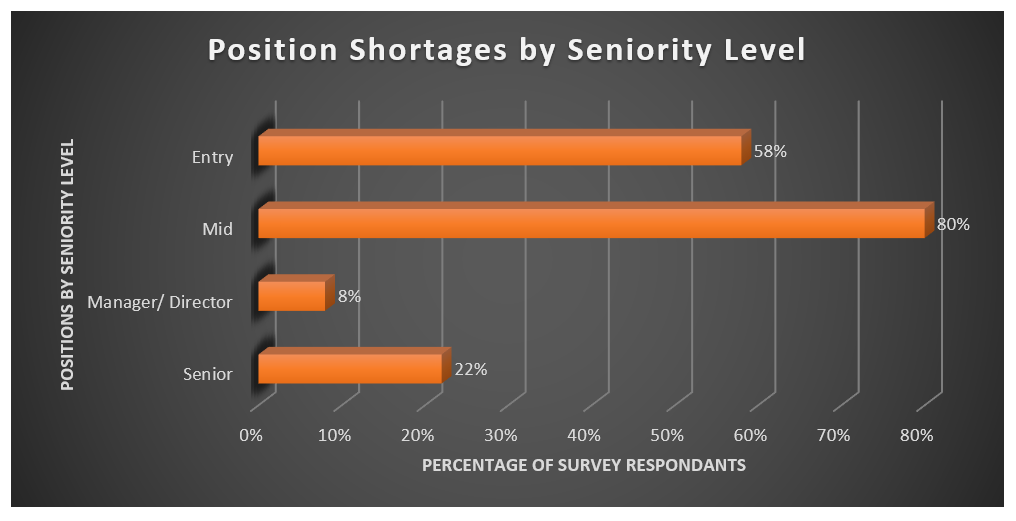Insights into the forces shaping our industry.
Lighting Labor Shortage
Hiring Advice, Industry Commentary
Nearly three years into the pandemic, America is still experiencing a labor shortage. According to Federal Reserve Chairman Jerome Powell, about 3.5 million workers are “missing” from the workforce. This has affected the manufacturing industry greatly after losing roughly 1.4 million jobs at the onset of the pandemic. Since then, manufacturers have struggled to fill jobs, and as of January 2023, there are 803,000 open manufacturing jobs.
Retirements, especially “excess retirements” (retirements that would likely not have occurred in the absence of the pandemic), are primarily to blame for this gap, with The Federal Reserve noting that as of October 2022, retirements in the last two years account for “nearly all of the shortfall” in the labor force participation rate”. Other factors to blame for this gap include automation and issues finding/ affording childcare. The bottom line is there are more openings than job seekers, and according to the World Bank, over the next decade, the number of people of working age (between 15 and 65) will decline by over 3% in the US.
To further analyze how these shortages impacted the Lighting Industry, Egret Consulting sent out a survey to Owners, CEO & Presidents, and Human Resources Managers to find out which departments saw the most shortages. Below are our results:

Egret then asked each company to describe which seniority levels saw the most shortages. The vast majority, 80% of respondents, saw shortages in the mid-level (5-10 years of experience) range. Our full results are shown in the graph below, with entry-level positions meaning 0-5 years of experience, mid-level positions typically having 5-10 years of experience, and senior-level positions meaning 10+ years of experience (excluding management).

Considering this, it’s not surprising that most of our respondents from the Lighting Industry are looking outside of the industry for talent. For entry-level positions, companies are looking to recruit new graduates from colleges and universities (78% of respondents), trade schools (47% of respondents), and high schools (13% of respondents). For higher-level positions, companies are recruiting from a wide range of industries and offer soft-skill training for candidates to changeover to the Lighting Industry. Forty % of respondents are focusing on other types of manufacturing to find people, including automotive, other mechanical products, semiconductors, electronics, industrial, machinery repair, and metal-based products. Fifteen % are looking for talent from the tech industry, where it was suggested that 300,000 people are seeking employment. Ten % are recruiting from electrical distributors, retailers, and the medical industry, where people are burnt out from the pandemic. And lastly, five % are recruiting from the software and hospitality industries.
When asked if the company was using Automation and/or AI (Artificial Intelligence) to help combat labor shortages, surprisingly, only 36% of the respondents said yes, with one explanation for the lack of use in these products being that they are too complicated. Of those lighting companies using automation and/or AI, the majority, 63%, are using it for Manufacturing and Logistics positions, followed by 45% for sales and marketing, 36% for customer service, and 27% for warehouse positions. The most common Automation/ AI solution programs listed were Business Analysts, RPA (Robotic Process Automation), ChatGPT, 3D printing, robotic welding, automated metal fabrication, Salesforce AI, Cobots, and AI for tracking inventory and logistics.
So how do we solve the problem?
There were a lot of ideas about how we can encourage people to join the Lighting Industry. Here are a few suggestions from our survey respondents:
- Promote the wide range of career opportunities within lighting that suit different candidate life stages and lifestyles. There are lots of paths to grow and succeed in lighting.
- Hire people with no lighting experience, support them to take ALA or NAILD courses, and have industry veterans provide training on lighting basics and products.
- Encourage and welcome women and minorities into the industry; and follow organizations like WILD (Women in Lighting + Design) that “highlight and challenge unconscious bias in the industry” and support women and minorities working in the Lighting Industry.
- Embrace technology and outside resources for help when needed.
- Focus on high-quality, spec-grade products prospective candidates will be proud of.
- Regarding Colleges, Universities, and Trade Schools:
- Create more lighting minors, classes, and curriculums.
- Host students at industry events and trade shows.
- Encourage groups like the IES, IALD, NAILD, WILD, etc., to get more involved with local colleges, universities, and trade schools to drive awareness.
- Find education programs that manufacturers can participate in. Then, make sure the students in those programs know you’re hiring.
- Reach out to students in adjacent majors such as electrical engineering, marketing, economics, physics, etc.
- Provide free services and lectures for students.
- Create and promote paid internship programs.
- Promote and highlight the exciting parts of the Lighting Industry to incoming and current staff, reflecting on why you got into the Lighting Industry: aesthetics of design, impacts of proper lighting, how lighting affects health, etc.
- Let prospective candidates know of all the opportunities the Lighting Industry can offer once they have lighting experience.
Inspire the next generation in lighting by sharing your “lighting story” – What made you get into and stay in the Lighting Industry?
